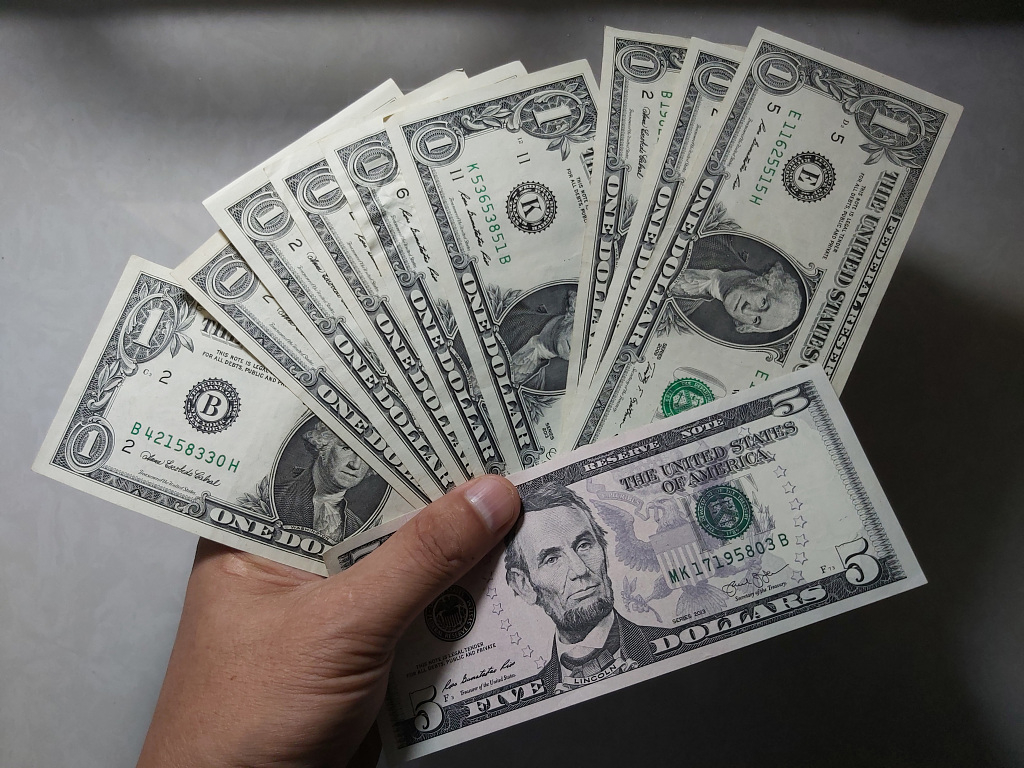
The DAX Index curve inside the Frankfurt Stock Exchange in Frankfurt, Germany, December 28, 2018. /VCG Photo
The DAX Index curve inside the Frankfurt Stock Exchange in Frankfurt, Germany, December 28, 2018. /VCG Photo
Editor's note: John Gong is a research fellow at Charhar Institute and professor at the University of International Business and Economics. The article reflects the author's opinions, and not necessarily the views of CGTN.
After a 15-year hiatus, the Chinese government is again returning to the European Union market for sovereign bond issuance. A total of four billion euros is sold to European investors, including pension funds, mutual funds and other institutional investors.
The three-part deal consisted of two billion euros in seven-year notes priced at 99.5 to yield 0.197 percent, one billion in 12-year bonds priced at 98.639 to yield 0.618 percent, and one billion in 20-year bonds priced at 98.603 to yield 1.078 percent.
According to Bloomberg, the issuance was well received by the market with so much enthusiasm that a total investor demand close to 20 billion euros was recorded, which is reflected in a much-reduced bond yield in the end.
The symbolic significance of this bond issuance, other than the astonishingly low interest rates China is paying on these debts in Europe, portends the beginning of China's effort to diversify its foreign exchange reserves away from U.S. dollar-denominated assets amid a broad trend of the continued declining role of U.S. dollar in global trade and investment.
China's current foreign exchange reserves stand at a bit over three trillion U.S. dollars, out of which about a third, that is over one trillion US dollars, is invested in U.S. government bills and bonds.
Historically China's sovereign and corporate debt issuances are mostly about raising U.S. dollars. In 2017 alone, U.S. dollar-denominated bonds issued by Chinese institutions – Kungfu bonds as they are referred to – totaled 224 billion U.S. dollars. But it looks like Kungfu bonds are running out of Kungfu tricks these days. Last year by May, the total Kungfu bond issuance was only about 80 billion U.S. dollars.
At the same time, the dollar's share of the global trade as a settlement means keeps falling, especially in world oil transactions, partly due to America's declining share of the world economy and partly due to some oil-producing countries' deliberate attempt to settle trade with local currencies in response to Washington's threat of weaponizing the dollar against them.

China's possible concern for its foreign exchange reserves' safety is not without reason. It has been quietly seeing, for example, Russia and Venezuela being targeted for setting up an alternative SWIFT system, a Washington-controlled interbank fund settlement system.
It has been quietly reading President Trump's tweets, at the height of the China-U.S. trade spat, about invoking the 1977 International Emergency Economic Powers Act (IEEPA), which allows the President to deploy a range of sanction tools under the name of national emergency in response to unusual or extraordinary threats. Lately, there have been reports in the U.S. regarding the Trump administration's considering restrictions on U.S.-based mutual fund flows into China, including a ban on U.S. pension funds from investing in Chinese capital markets, delisting Chinese firms from U.S. stock exchanges, and limiting their access to American stock indices.
These pernicious developments are unfolding in Washington, not without being noticed in Beijing. So it is not surprising to see that now Beijing is returning to the European market for sovereign debt issuance after 15 years when China did something like this in Europe. Maybe we are at the early stage of the "Grande Muraille bond" era.
Here are some important numbers to put things into perspective: The International Monetary Fund (IMF) estimates that about 60 percent of the world's foreign exchange reserves are held in U.S. dollars, while the euro makes up about 20 percent, followed by the yen and the pound sterling, which jointly account for less than five percent.
If China's currency holding is marching into the euro zone on a grand scale, how much of an impact would it be on the U.S. bond market?
(If you want to contribute and have specific expertise, please contact us at opinions@cgtn.com)